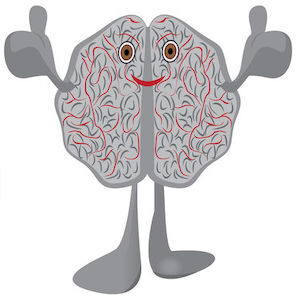By Dr. Ken Broda Bahm:

With the coronavirus pandemic infections and deaths once again surging back to peak levels, it is an odd juxtaposition that people seem to be getting out and about at increasing rates. Still, I’ve often heard after someone has traveled or been at a large or inter-household gathering, “I felt safe.” I’m never sure what that means (would we “feel” it if it was unsafe?). But it is a reminder that risk is a subjective and personal perception. And it is a perception that is often biased in the direction of optimism. We feel that we will do better than others who are similarly situated. A recent study (Pascual-Leone et al., 2021) shows that it applies to the virus: “People are more worried about the potential health impact of COVID‐19 on others than on themselves,” and the difference is over 30 percent.
That is an example of something called the “optimism bias.” It is a bit imprecisely named, because the bias doesn’t refer to a general belief that things are going well and will get better. Instead, it refers to the egocentric and comparative belief that our own chances of experiencing negative events are lower than that of others in similar circumstances. The virus happens to other people, serious accidents happen to other people, lawsuits happen to other people. When it is a negative event; we see the chances of it happening to us as being generally below average. This well-documented bias can create a barrier for jurors in identifying those who have experienced something negative. The thought that, “that would never have happened to me,” can lead to victim-blaming, and depending on the case, could be applied to either a plaintiff or a defendant. In this post, I will take a look at addressing the optimism bias in jury selection and trial.
Jury Selection and the Optimism Bias
If you have a case that could be particularly prone to victim-blaming and a mindset of “That could never be me” from a jury, then you might consider assessing potential optimism bias as part of jury selection.
Researchers (Sharot, 2011) have estimated that as much as 80 percent of the population carries this habit, so you won’t have enough strikes to address it fully, but you can try to identify those on the extreme edge. For example, in a questionnaire you might ask:
“Considering your own risk of a slip-and-fall resulting in a serious physical injury, how would you describe your own risk of experiencing such an injury?” (with response options ranging from “Far less than average” to “Far greater than average“).
Alternately, in group oral voir dire, you could customize a question like the following:
Now this is a case about a sports injury, and many of us participate in sports, either now, or in the past. Thinking about a sport or other activity you’ve participated in, and comparing yourself to others who engaged in that same activity, would you say that you are at a greater chance of injury, a lesser chance of injury, or about the same? By a show of hands, let me ask about each of those options.
Trial Persuasion and the Optimism Bias
The research indicates that the optimism bias seems to be uniquely resistant to debasing, and that simply calling it out may cause a boomerang effect in which the bias becomes stronger. But while it is common for people to believe that they themselves are less likely to experience a negative event than others, the belief is not static. There are two general factors that influence how salient this belief will be:
Distance: As people feel greater personal distance between another individual and themselves, they are more likely to optimistically believe that they have less of a chance of a negative outcome than that person. For example, if we view ourselves as more protected than someone with a dramatically different lifestyle or culture, then that individual is more likely to be viewed as having deserved whatever happened.
Control: As people have greater feelings of choice and control on a given topic, they will apply that power to the belief that they would have fared better than average. So driving a vehicle and choosing one’s own route can lead to the illusion of reduced risk of even those accidents that are outside one’s control, like being rear-ended.
So one way to address your panel’s optimistic assumptions about themselves, relative to your client, is to address distance and control as part of your message. If you reduce perceived distance by humanizing and building similarity, and reduce perceived control by emphasizing situational factors outside an individual’s power and choices, then you will, to some extent, combat the optimism bias.
___
______
Other Posts on Cognitive Bias:
- Treat the Pandemic as a Bias Laboratory
- Know Your Cognitive Biases
- Know Your Cognitive Biases, Part 2
Pascual‐Leone, A., Cattaneo, G., Macià, D., Solana, J., Tormos, J. M., & Bartrés‐Faz, D. Beware of Optimism Bias in the Context of the COVID‐19 Pandemic. Annals of Neurology. https://doi.org/10.1002/ana.26001
Sharot, T. (2011). The optimism bias. Current Biology, 21(23), R941–R945.https://doi.org/10.1016/j.cub.2011.10.030